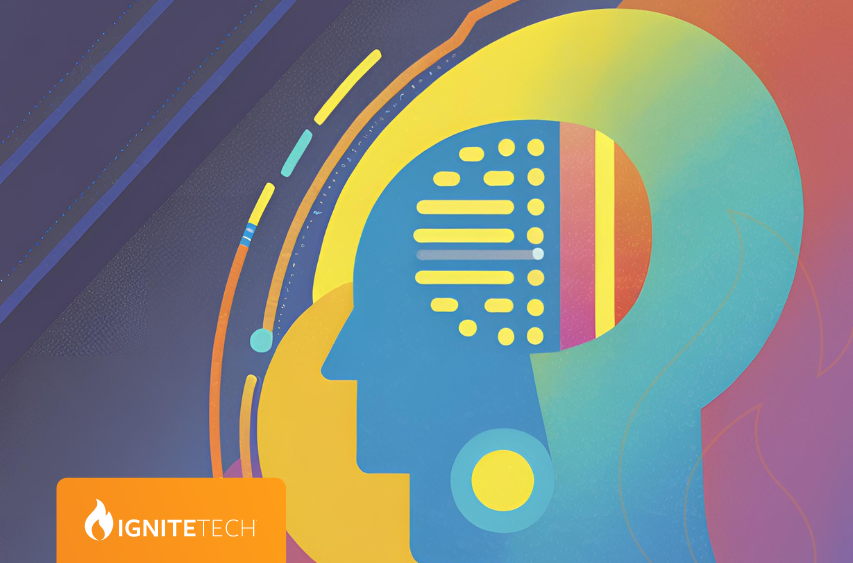Text-to-speech (TTS) technology has come a long way in recent years, thanks to the rapid advancements in artificial intelligence (AI) and machine learning. From robotic-sounding voices to highly realistic and expressive synthetic speech, the evolution of TTS has been remarkable.
Today, AI-powered TTS is transforming how we interact with digital content and devices, offering various applications beyond traditional use cases like virtual assistants and audiobooks. Industries such as healthcare, education, and entertainment leverage TTS to create more accessible, engaging, and personalized user experiences.
In this blog post, we'll explore the fascinating world of AI-driven TTS technology. We'll examine its history, the cutting-edge developments shaping its future, and the various applications and challenges associated with this exciting field. So, let's dive in and discover how AI is revolutionizing how we experience spoken content.
The Early Days of Text-to-Speech
The origins of text-to-speech technology can be traced back to the early 20th century when the first electronic speech synthesis systems were developed. In the 1930s, Homer Dudley, an engineer at Bell Labs, created the VODER (Voice Operating Demonstrator), the first machine capable of generating recognizable speech. However, these early systems were primitive and could only produce simple, robotic-sounding speech.
In the 1970s and 1980s, TTS technology began to evolve with the introduction of formant synthesis and concatenative synthesis techniques. Formant synthesis involved modeling the acoustic properties of human speech, while concatenative synthesis relied on stitching together pre-recorded speech segments to generate speech output. These methods significantly improved the intelligibility and naturalness of synthetic speech, paving the way for broader adoption of TTS in various applications.
One of the most notable examples of early TTS systems was DECtalk, developed by Digital Equipment Corporation in 1984. DECtalk was known for its ability to produce relatively natural-sounding speech. It was used in various applications, including assistive technology for individuals with visual impairments and interactive voice response systems for businesses.
Despite these advancements, the speech generated by early TTS systems still lacked human speech's expressiveness and emotional range. With the advent of AI and machine learning, TTS technology would genuinely begin to revolutionize how we interact with spoken content.
The Rise of Neural Networks and Deep Learning
The advent of neural networks and deep learning in the early 2000s marked a turning point in the development of text-to-speech technology. By leveraging the power of artificial intelligence, researchers were able to create more sophisticated TTS models that could generate highly realistic and expressive synthetic speech.
One of the key breakthroughs in this era was the introduction of WaveNet, a deep neural network developed by Google DeepMind in 2016. WaveNet could produce remarkably natural-sounding speech by directly modeling the raw waveform of an audio signal. This approach set a new standard for TTS quality and opened up new possibilities for applying synthetic voices in various domains.
Another significant development was the rise of end-to-end TTS models, such as Tacotron and Deep Voice, which could generate speech directly from text input without complex handcrafted features. These models employed attention mechanisms and sequence-to-sequence architectures to learn the mapping between text and speech, resulting in more fluent and expressive synthetic speech.
Integrating neural networks and deep learning into TTS systems allowed for greater flexibility and adaptability in generating synthetic speech. Researchers could now train TTS models on large datasets of human speech, enabling the models to learn and replicate the nuances, intonation, and emotional range of natural speech.
Moreover, advances in neural coding techniques, such as WaveRNN and WaveGlow, further enhanced the quality of synthetic speech by generating high-fidelity audio waveforms in real-time. These techniques allowed for more efficient and faster speech synthesis, making deploying TTS systems in a broader range of applications possible.
The combination of deep learning, large-scale datasets, and powerful computational resources has revolutionized the field of text-to-speech, bringing us closer than ever to truly human-like synthetic speech. As research in this area progresses, we can expect even more remarkable advancements in the quality, naturalness, and expressiveness of AI-generated speech.
Applications and Future Directions
The advancements in AI-driven text-to-speech technology have opened up various applications and possibilities across multiple industries. Today, TTS is no longer limited to simple voice output for assistive devices or audiobooks; it has become integral to many innovative solutions and experiences.
One of the most prominent applications of TTS is in virtual assistants and smart speakers. AI-powered TTS enables these devices to communicate with users more naturally and engagingly, providing information, answering questions, and executing commands with human-like speech output. As TTS technology continues to improve, we can expect virtual assistants to become even more sophisticated and capable of handling complex interactions.
Another exciting application of TTS is in content creation and localization. With AI-driven TTS, content creators can quickly generate audio versions of their written materials in multiple languages and accents, such as articles, blog posts, or scripts. This not only makes content more accessible to a broader audience but also saves time and resources in the production process.
In the entertainment industry, TTS is being used to create more immersive and personalized experiences. For example, in video games and virtual reality applications, AI-generated voices can create dynamic and realistic character dialogues, adapting to scenarios and user actions in real-time. Similarly, in the world of podcasting and audiobook production, TTS can streamline the creation process and enable the generation of multiple versions of the same content with different voices and styles.
Looking towards the future, the potential applications of TTS are vast and exciting. As AI advances, we can expect to see more natural, expressive, and emotionally intelligent synthetic voices that can adapt to different contexts and user preferences. Researchers are also exploring the possibility of creating personalized TTS voices that can mimic specific individuals' speech patterns and characteristics, opening up new opportunities for preserving voices and creating personalized voice assistants.
Moreover, integrating TTS with other AI technologies, such as natural language processing and sentiment analysis, can lead to the development of more context-aware and empathetic voice interfaces. These systems could potentially understand and respond to users' emotions, providing more human-like and supportive interactions.
As AI-driven TTS continues to evolve, addressing the ethical considerations surrounding the use of synthetic voices is crucial. Issues such as voice cloning, deepfakes, and the potential misuse of TTS for deceptive purposes must be carefully examined and regulated to ensure this technology's responsible development and deployment.
In conclusion, the future of AI-driven text-to-speech technology is full of promise and potential. As research and innovation in this field continue to advance, we expect to see a wide range of new applications and experiences that will transform how we interact with technology and consume content. From more natural and expressive virtual assistants to personalized voice experiences and accessible content creation, the possibilities are endless. It is an exciting time to be at the forefront of this technological revolution as we shape the future of communication and human-machine interaction.






